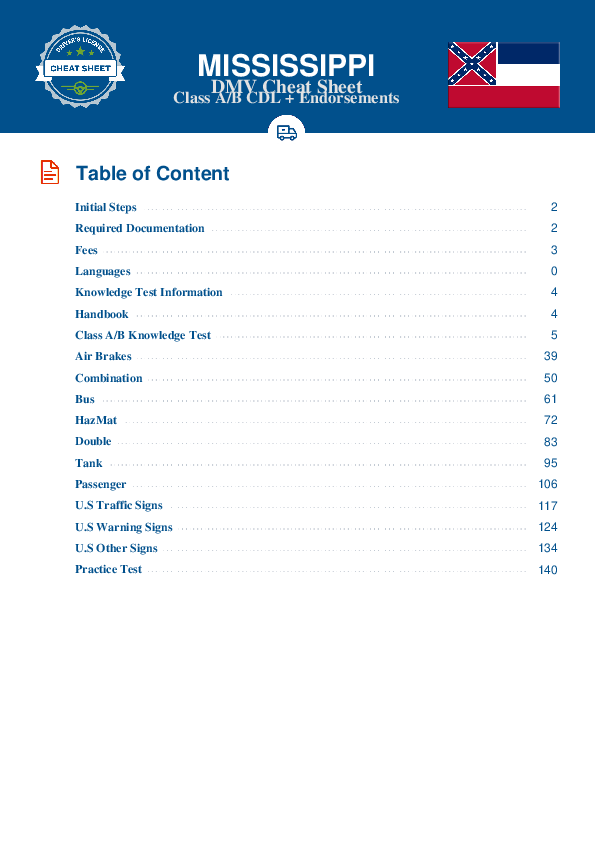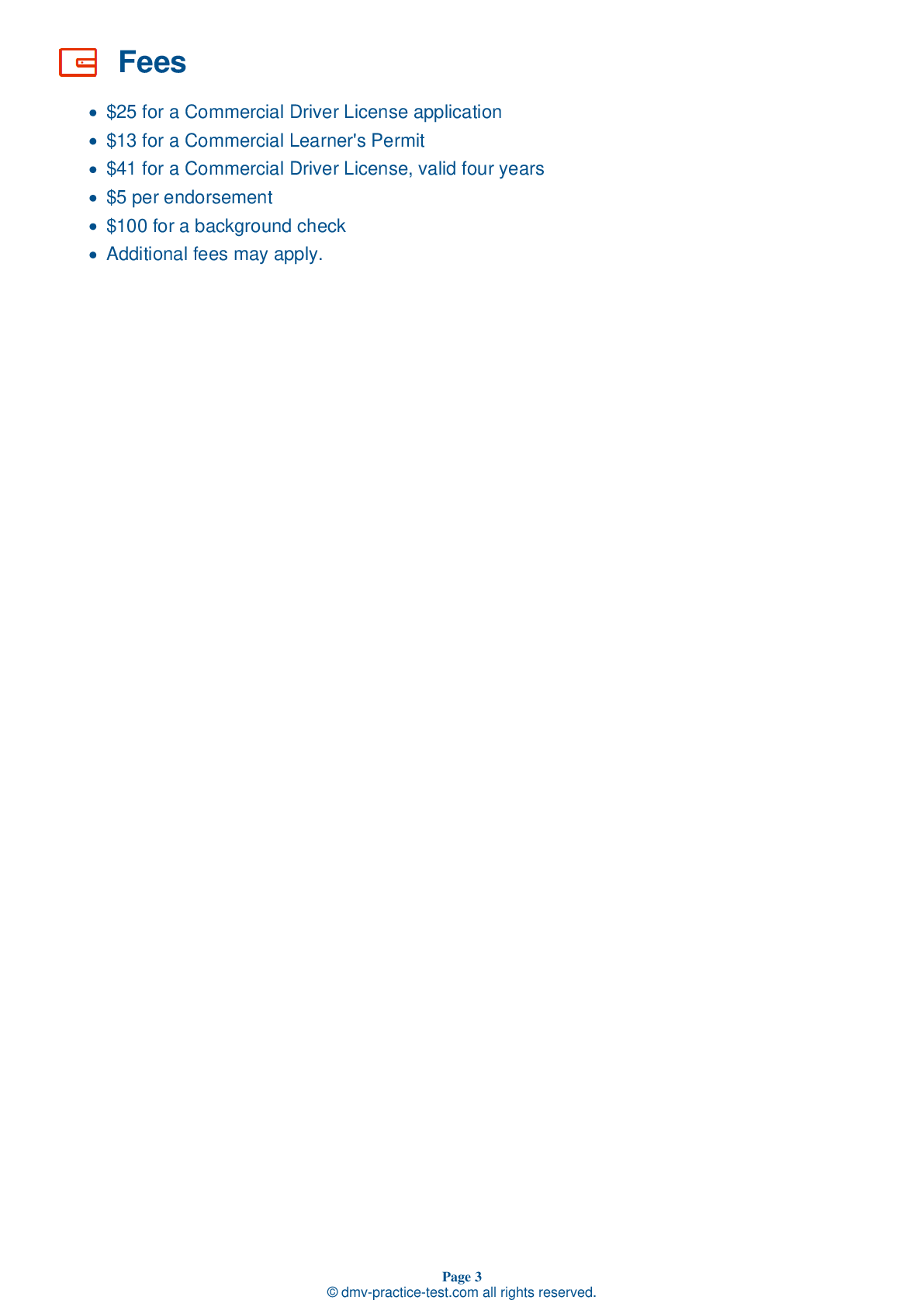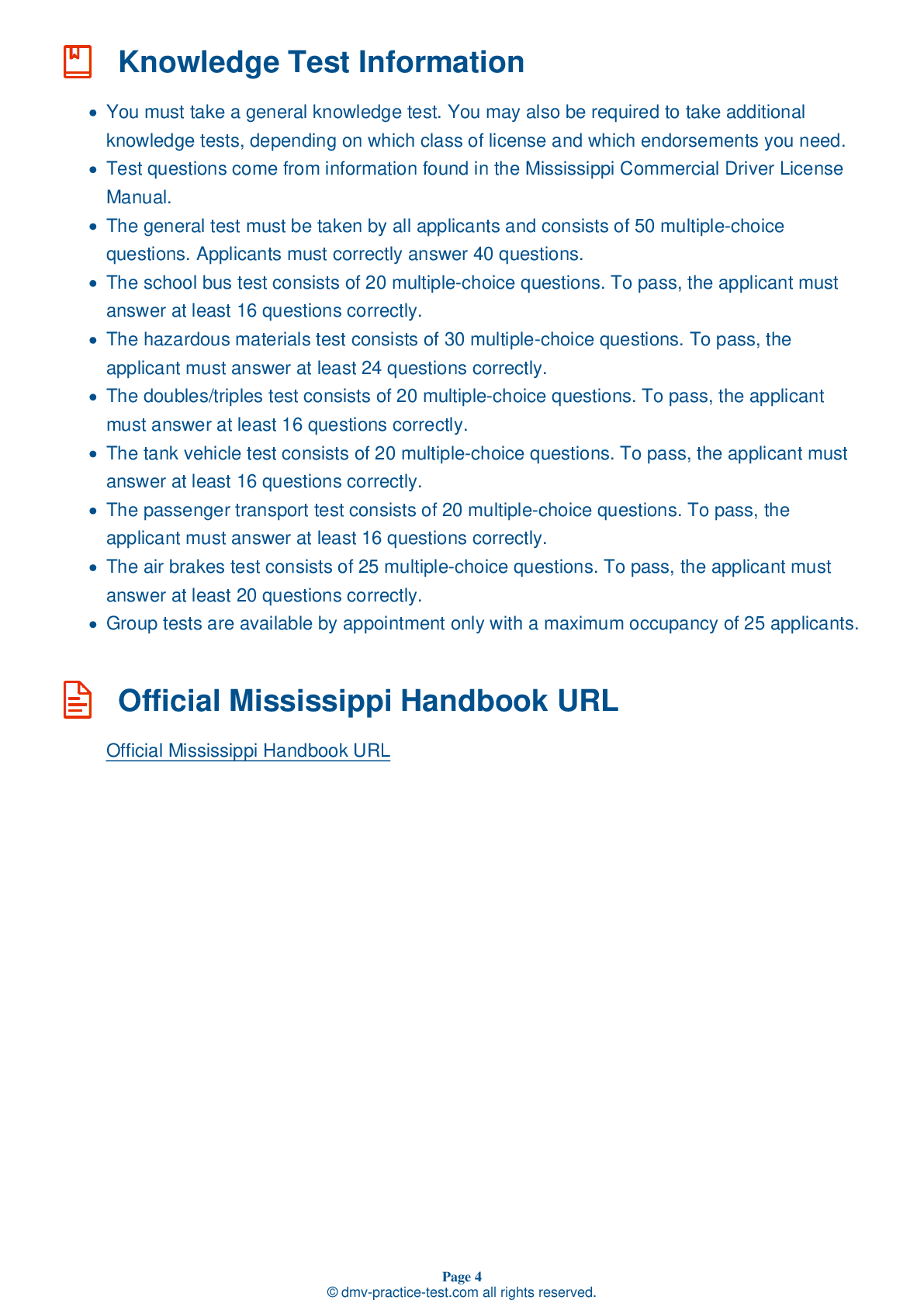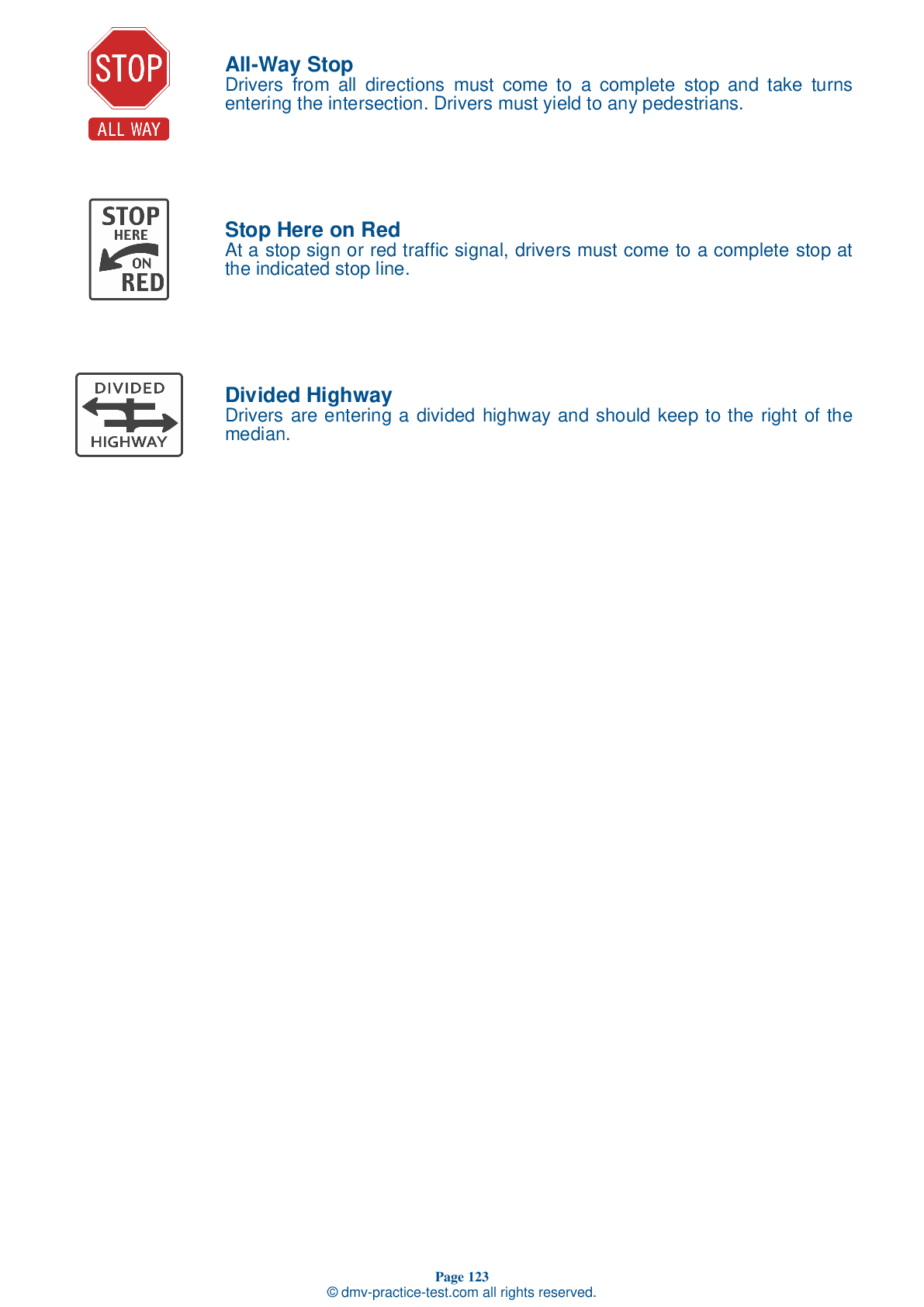Knowledge Test Class B #2
Class B Driving Test | Mississippi 2025 #2 Page 7 of 7
Train for FREE online with our Mississippi class B license test. The official exam test consists of several obligatory parts, with all of them checking your knowledge of different blocks of road rules. If you need to obtain a MS CDL class B permit in 2025, practice as much as possible. Free sample tests published on our website will help you check and improve your knowledge and boost your grades. Please bear in mind that CDL class B requirements may vary from state to state.
50
40
20
43 . When entering fog, you should:
Slow down.
If at all possible, it is best to avoid driving in fog. However, if you must drive through fog, slow down before reaching it.
44 . Some air brake systems use alcohol:
To reduce the risk of rust forming on air brake valves.
Some air brake systems contain an alcohol evaporator. This device introduces alcohol into the braking system to inhibit the formation of ice.
45 . If there is a fire in your vehicle, you should not:
In the event of a vehicle fire, you should leave the road and stop in an open area. Do not pull into a service station as fuels at the service station could catch fire. Report the fire and your location to emergency services.
46 . What should happen if the air pressure in the air brake system tanks falls below 60 psi?
The vehicle should stop.
On vehicles with air brakes, a low air pressure warning signal will come on if the pressure in the air tanks falls below 60 psi. On large buses, the signal may activate at 80 to 85 psi.
47 . When driving a vehicle equipped with an Anti-Lock Braking System (ABS), you should:
Brake with less force than you would in a vehicle not equipped with ABS.
When driving a tractor-trailer combination that is equipped with an Anti-Lock Braking System (ABS), you should brake in the same manner that you would if the vehicle was not equipped with ABS.
48 . When approaching a railroad crossing, you should:
Look to see if nearby plants are moving from the breeze created by a passing train
As a precaution, you should always approach a railroad crossing under the assumption that a train is coming. Do not rely only on signals or your hearing to indicate that a train is approaching.
49 . You may:
A person cannot have more than one driver license at a time. States share information through a computer database to ensure that no person has more than one license. Violation of this law could result in fines or jail time.
50 . If pulled over on the side of the road, you should:
Set out items from the cab to warn motorists.
If you must stop on the side of the road, you should turn on your emergency flashers and place the appropriate warning signals to warn other drivers.
2025 Mississippi | Frequently Asked Questions
A CDL Class A license in Mississippi allows the holder to operate any combination of vehicles with a Gross Combination Weight Rating (GCWR) of 26,001 pounds or more, provided the Gross Vehicle Weight Rating (GVWR) of the vehicle(s) being towed is over 10,000 pounds. This typically includes tractor-trailer combinations.
A Class A CDL license in Mississippi permits the operation of vehicles such as tractor-trailers, truck and trailer combinations, tank vehicles, livestock carriers, and flatbeds. Basically, it covers any combination of vehicles with a gross combination weight rating (GCWR) of 26,001 pounds or more if the towed vehicle is over 10,000 pounds.
To obtain a Class A CDL in Mississippi, you must be at least 21 years old (18 for intrastate travel), possess a valid Mississippi driver's license, pass a vision test, and complete a written knowledge exam. You'll also need to pass skills tests in a vehicle representative of the class you're applying for, and meet medical requirements.
In Mississippi, you must be at least 21 years old to qualify for a Class A CDL license for interstate driving. However, you can be 18 years old to apply for a CDL for intrastate driving, which limits you to driving within the state of Mississippi only.
Endorsements aren't required for a Class A CDL license, however, they can enhance your license. They allow you to drive specific types of vehicles like tank vehicles, passenger vehicles, school buses or transport hazardous materials. To get an endorsement, you must pass additional written and skills tests related to the specific type of vehicle.
The Class A CDL skills test in Mississippi encompasses three sections: a pre-trip vehicle inspection, a basic vehicle control test, and an on-road driving test. These tests evaluate your ability to inspect your vehicle before the trip, control the vehicle during typical maneuvers, and drive safely in various road and traffic conditions.
Yes, there are limitations. Class A CDL license holders in Mississippi may be restricted based on the type of vehicle they tested in. For instance, if the test was taken in an automatic vehicle, they can't drive a manual truck. Other limitations could be related to air brakes, passengers, tank vehicles, and hazardous materials.
In Mississippi, the written Class A CDL test is generally conducted in English. However, some states may offer the test in Spanish. Non-English speakers can usually use a dictionary or bring an interpreter. It's important to check with the local DMV office for specific language accommodations. Remember, federal regulations require all CDL holders to read and speak English.
Yes, you can request accommodations for the Class A CDL written test if you have a disability. Mississippi's Department of Public Safety works to ensure accessibility for all test-takers. Accommodations may include extra time, a separate testing room, or assistive technology. You should contact your local testing center in advance to discuss your needs and arrange accommodations.
Yes, if you don't pass the Class A CDL written test in Mississippi, you can retake it. However, you may have to wait a specified period before you can reattempt it. It's also likely that you'll have to pay a retesting fee. Check with the Mississippi Department of Public Safety for specific rules and regulations regarding retakes.



